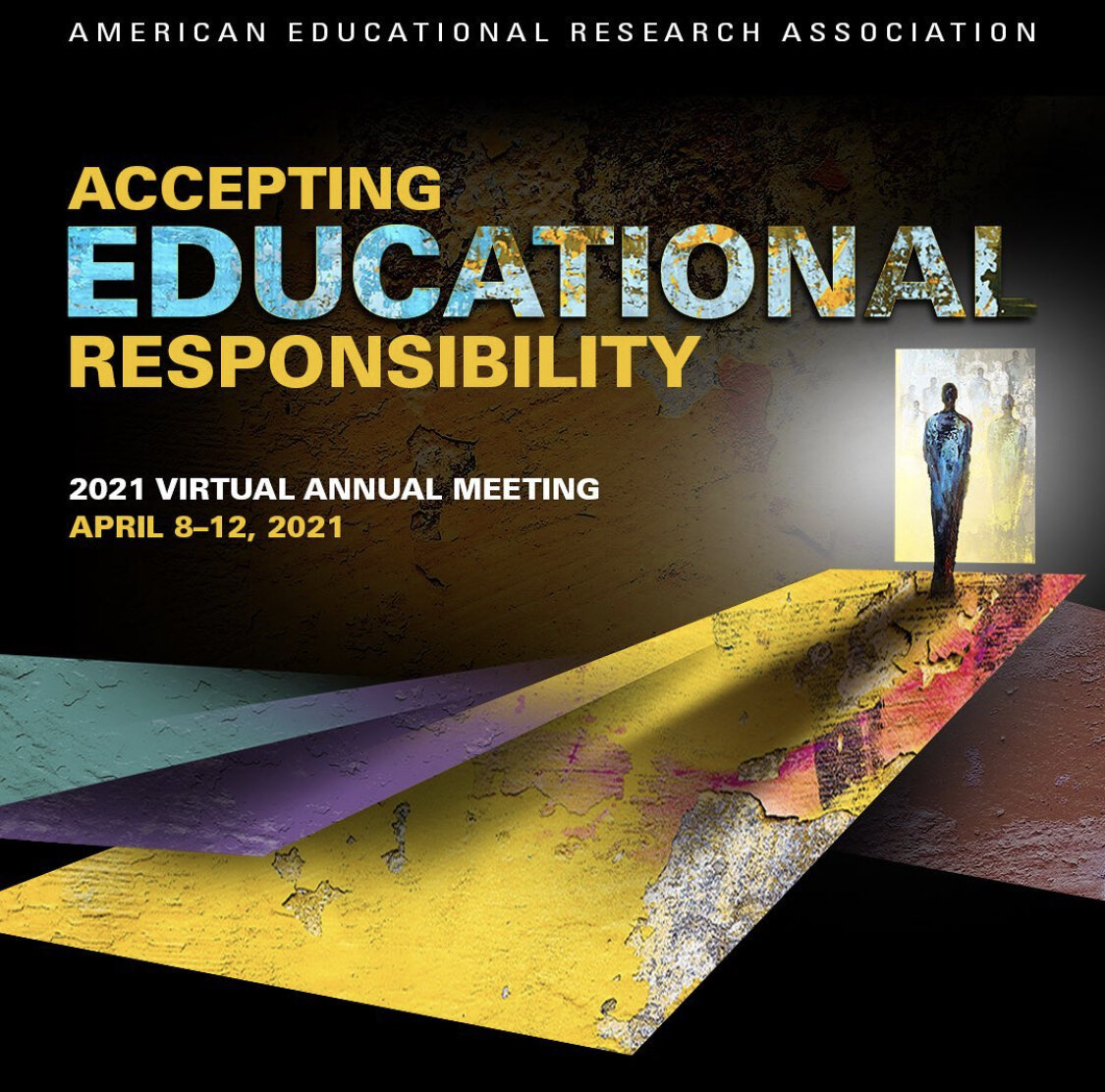This is a guest blog post written by Ana Guadalupe Vielma, one of Dr. Stephanie Cawthon’s mentees. Recently featured among St. Edward’s University’s i200 impactful alumni, she is a second-year doctoral student in the Human Development, Culture, and Learning Sciences program in the Department of Educational Psychology at The University of Texas at Austin, where Ana investigates psychological assessments and interventions that support the mental health of underrepresented students in higher education.
We made it! Though it might not have been the smoothest transition into the virtual world of academic conferences, the American Educational Research Association (AERA) collaborated with outside efforts to put together a unique and innovative platform for this year’s annual meeting on April 8-12.
With New Opportunities Come New Challenges
In preparation for the conference, AERA encouraged all members to attend town hall meetings to learn more about the new online platform, use creative features such as the iPresentation Gallery, and enhance their virtual presence and overall experience.
As a first-time presenter and attendee, I was filled with excitement to hear from experts in our field, build connections, and share my research findings on the use of a Difference-Education Intervention on first-generation students in a roundtable session with those interested in supporting underrepresented students in higher education.
However, weeks before the conference, the organization announced they would not utilize Zoom to host their annual meeting. Instead, they notified members to expect a more modern and interactive platform to hold their workshops, professional development courses, and presentations.
Although I found these tutorials beneficial, AERA experienced a series of technical difficulties that left many needing support. As a result, the organization changed its system and accommodated presenters and attendees as best they could and will offer refunds to all attendees.
3 Main Takeaways for First-Time Attendees
Here are my three main takeaways from this year’s annual meeting, which I hope can especially help other graduate students and first-time conference .attendees.
-
Social media is a tool. Use it. Platforms such as Twitter and LinkedIn can help you find other academics online and connect with them beforehand. I highly recommend searching for hashtags related to the conference and following other scholars to build your network. Don’t be afraid to post about your presentation and invite others to attend. You may attract more individuals who are interested in your work.
-
It’s okay to take breaks. Zoom fatigue is a real thing, and it is normal to feel tired after a long day of online sessions and presentations. Navigating technical issues and a brand new platform is not easy! Remember to take time for yourself and reflect on your experience throughout the conference. You will feel more energized, productive and you’ll thank yourself later.
-
Expect the unexpected. AERA pushed us to learn something we had never used before and discover a more modern approach to presenting our work. Transitioning from in-person interactions to virtual experiences is still relatively new, and we can only prepare or do so much. This conference serves as a lesson that anything can happen, but we just have to do our best and hope next year will be better!
Looking Forward to 2022
Despite the technical challenges, AERA created a space for thousands of scholars across the nation to come together during a pandemic and participate in discussions related to equity and justice in educational and social contexts.
It was my first academic conference as a graduate student, and unfortunately, the meeting left me wanting more from the virtual experience. I had heard only positive feedback about previous in-person AERA conferences from my mentor and other faculty members and was looking forward to a similar experience.
While I missed out on creating genuine connections and essential conversations, I hope that AERA considers these sentiments and improves its program. Until then, I will be looking forward to San Diego in 2022!
